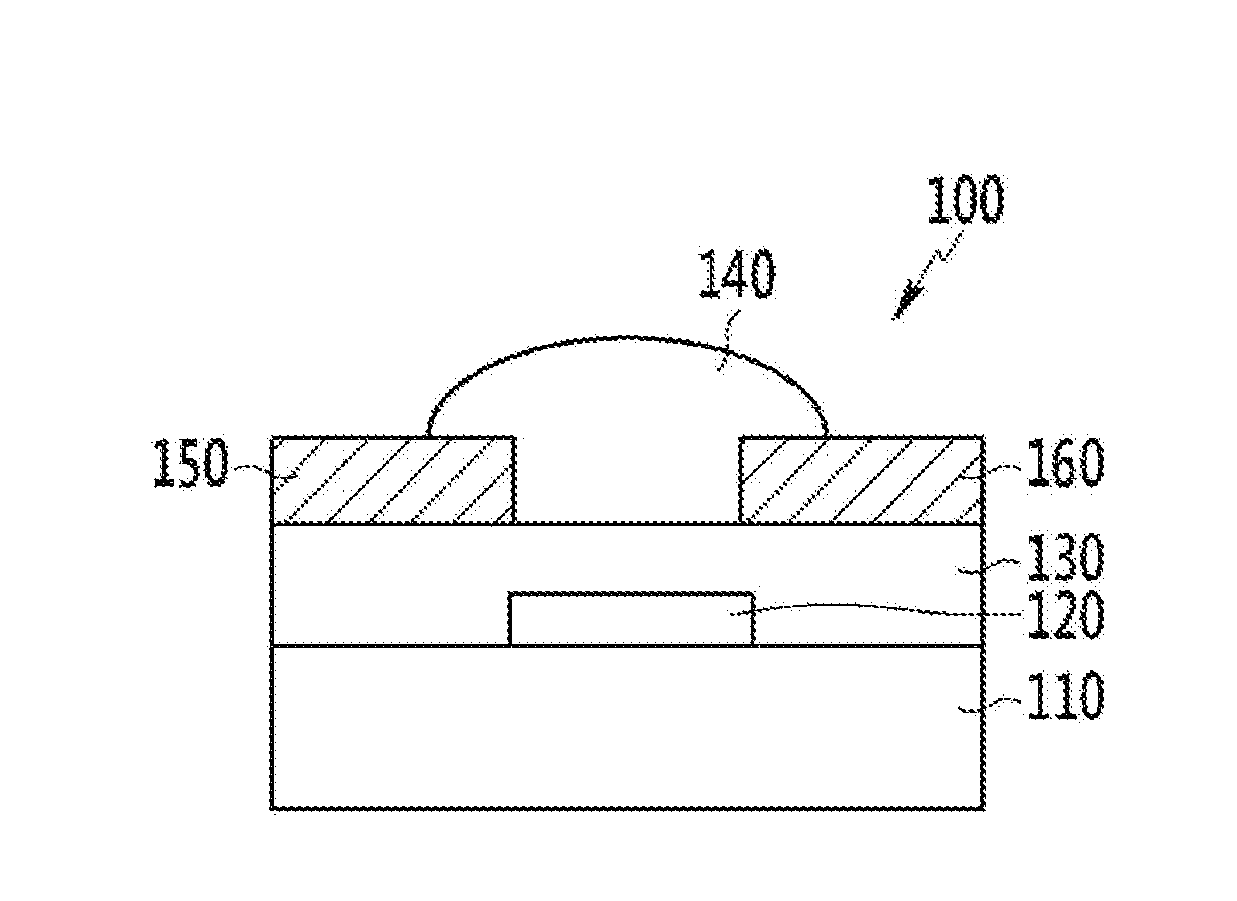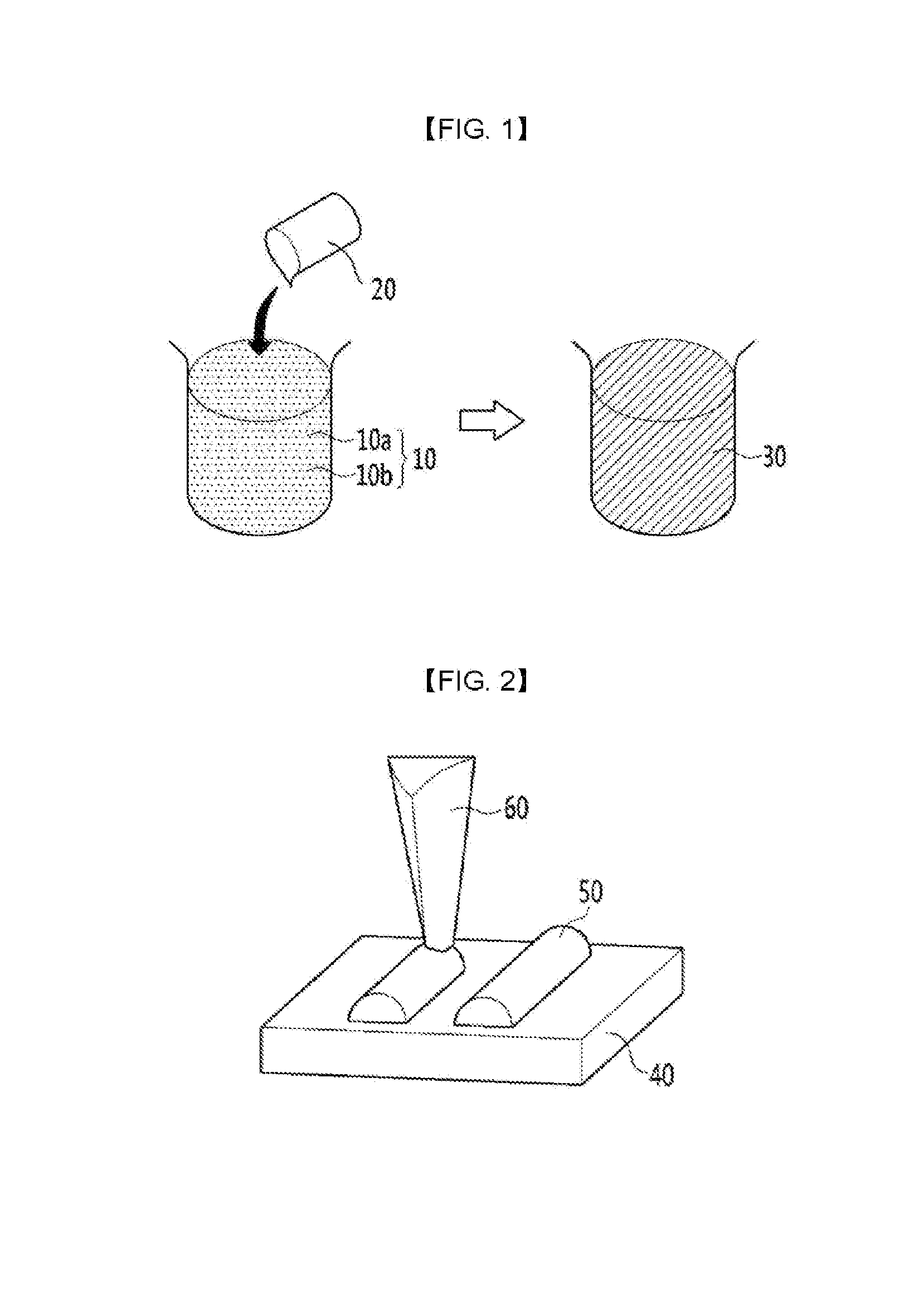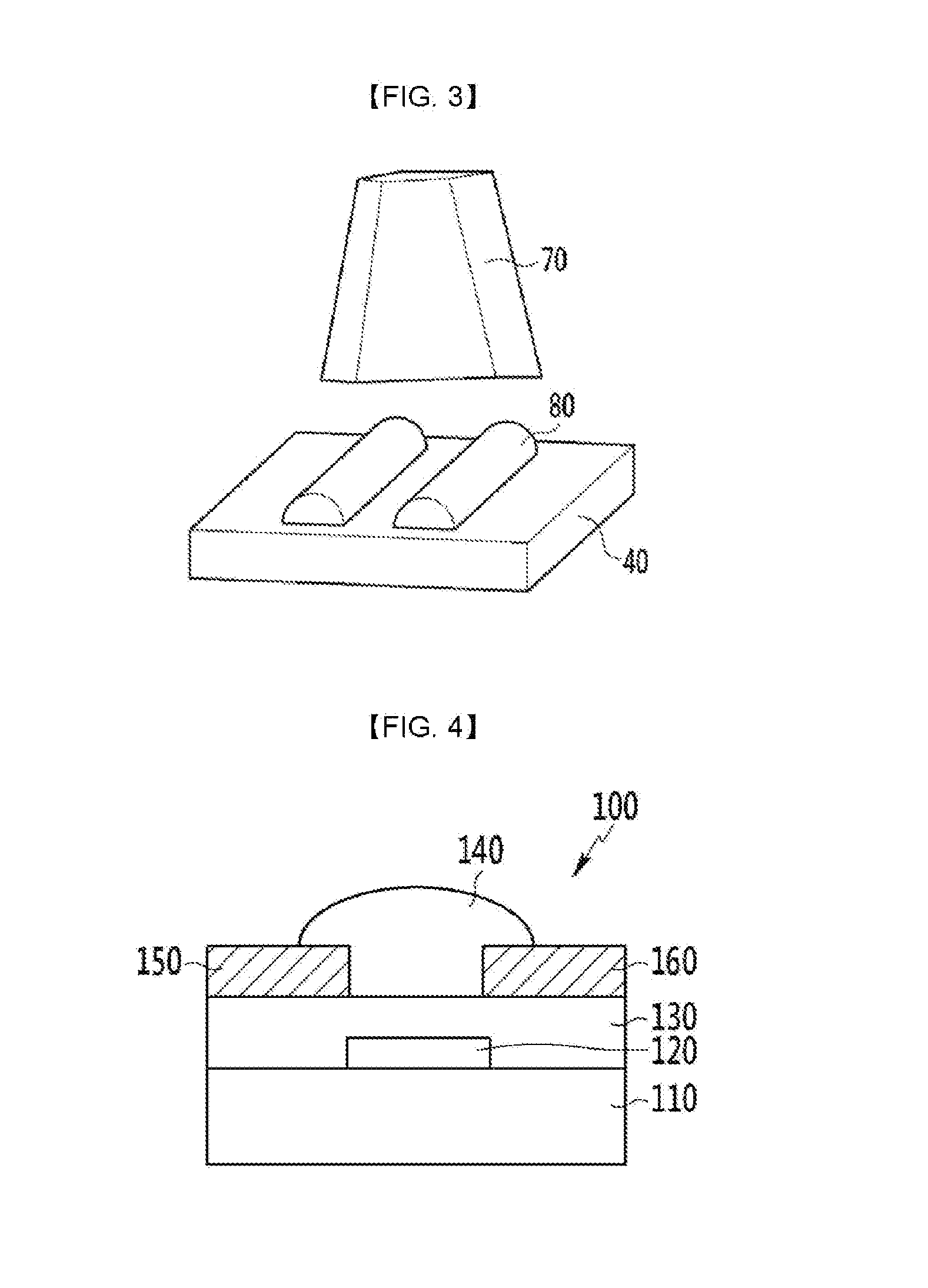Method of reducion graphene oxide and reduced graphene oxide obtained by the method, and thin film transistor including the reduced graphene oxide
- Summary
- Abstract
- Description
- Claims
- Application Information
AI Technical Summary
Benefits of technology
Problems solved by technology
Method used
Image
Examples
example 1
Preparation of Graphene Oxide Solution
[0079]25 mg of graphene oxide is obtained by oxidizing 1 g of graphite powder (Sigma Aldrich Co., Ltd.) with 5 g of potassium permanganate (KMnO4). Subsequently, 50 mg of the graphene oxide is added to 3 ml of water and the mixture is ultrasonicated, preparing a graphene oxide dispersion. Thereafter, 6 mL of n-methylpyrrolidone (NMP) is added to the graphene oxide dispersion and the mixture is agitated, preparing a graphene oxide solution.
Formation of Reduced Graphene Oxide Pattern
[0080]The graphene oxide solution is then deposited in a dropwise fashion on a silicon wafer with a microfluidic dispenser to print a plurality of graphene oxide patterns having a width of 120 μm. Subsequently, the silicon wafer is disposed inside a globe box, and reduced graphene oxide patterns are formed by radiating 50 white light pulses with an energy amount of 60 J / cm2 for 6 ms of on-time and 5 ms of off-time on the graphene oxide patterns.
example 2
[0081]A reduced graphene oxide pattern is formed under the same conditions as in Example 1, except for changing the number of radiation shots of the white light pulse to two, three, five, ten, and twenty.
example 3
Manufacture of Thin Film Transistor 1
[0093]Silicon oxide (SiO2) is deposited to be 300 nm thick on a silicon substrate doped in a high concentration. The graphene oxide solution according to Example 1 is deposited at a predetermined interval with a microfluidic dispenser to form a graphene oxide pattern. Subsequently, the graphene oxide pattern is radiated by 50 pulses of a white light pulse for an on-time of 6 ms and an off-time of 5 ms with an energy amount of 60 J / cm2, forming source and drain electrodes formed of the reduced graphene oxide. Poly(3-hexylthiophene) (P3HT) is then inkjet-printed on the source and drain electrodes and dried, manufacturing a thin film transistor.
PUM
| Property | Measurement | Unit |
|---|---|---|
| Time | aaaaa | aaaaa |
| Time | aaaaa | aaaaa |
| Time | aaaaa | aaaaa |
Abstract
Description
Claims
Application Information
 Login to View More
Login to View More - R&D
- Intellectual Property
- Life Sciences
- Materials
- Tech Scout
- Unparalleled Data Quality
- Higher Quality Content
- 60% Fewer Hallucinations
Browse by: Latest US Patents, China's latest patents, Technical Efficacy Thesaurus, Application Domain, Technology Topic, Popular Technical Reports.
© 2025 PatSnap. All rights reserved.Legal|Privacy policy|Modern Slavery Act Transparency Statement|Sitemap|About US| Contact US: help@patsnap.com



